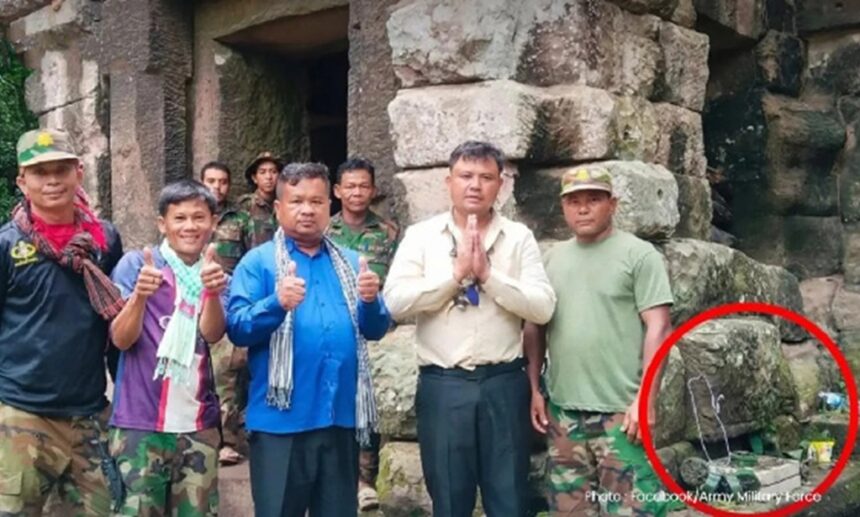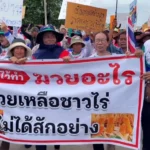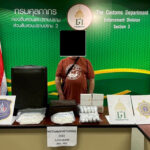BANGKOK – The Royal Thai Army (RTA) has strengthened its stance against Cambodia, maintaining that PMN-2 anti-personnel landmines found near the Thai-Cambodian border were deliberately laid by Cambodian soldiers and are genuine.
Thai officials say this act breaches international agreements and have asked the United Nations to intervene, which has led to more scrutiny from other countries as tension rises.
On 16 August, Foreign Minister Maris Sangiampongsa took several Southeast Asian diplomats to Si Sa Ket province. There, the army presented PMN-2 mines they say were found during clearance work in Phu Makua on 4 August.
According to the RTA, the mines appeared in areas where Cambodian forces had recently operated. Heng Ratana, chief of Cambodia’s Mine Action Centre, questioned this account, claiming the mines’ safety pins were still in place and the whole find could have been staged to deceive.
Major General Winthai Suwaree, speaking for the RTA, rejected the Cambodian explanation, stating the mines—whether disarmed or live—were discovered in front of Cambodian positions and appeared to be set as defensive obstacles.
He highlighted that from mid-July to mid-August, forty-one PMN-2 mines had been found in Thailand, including sites close to the Ta Muen Thom temple. He described this as clear evidence that the mines were planted intentionally.
To support their claim, the RTA shared photos and videos, including footage on their “RTATrend” Facebook page on 13 August. This showed Cambodian soldiers handling PMN-2 mines near disputed areas.
Winthai said comments from Lt. Gen. Maly Socheata, spokesperson for Cambodia’s Defence Ministry, amounted to an undeclared admission that their troops had used landmines, though Cambodia rejects this.
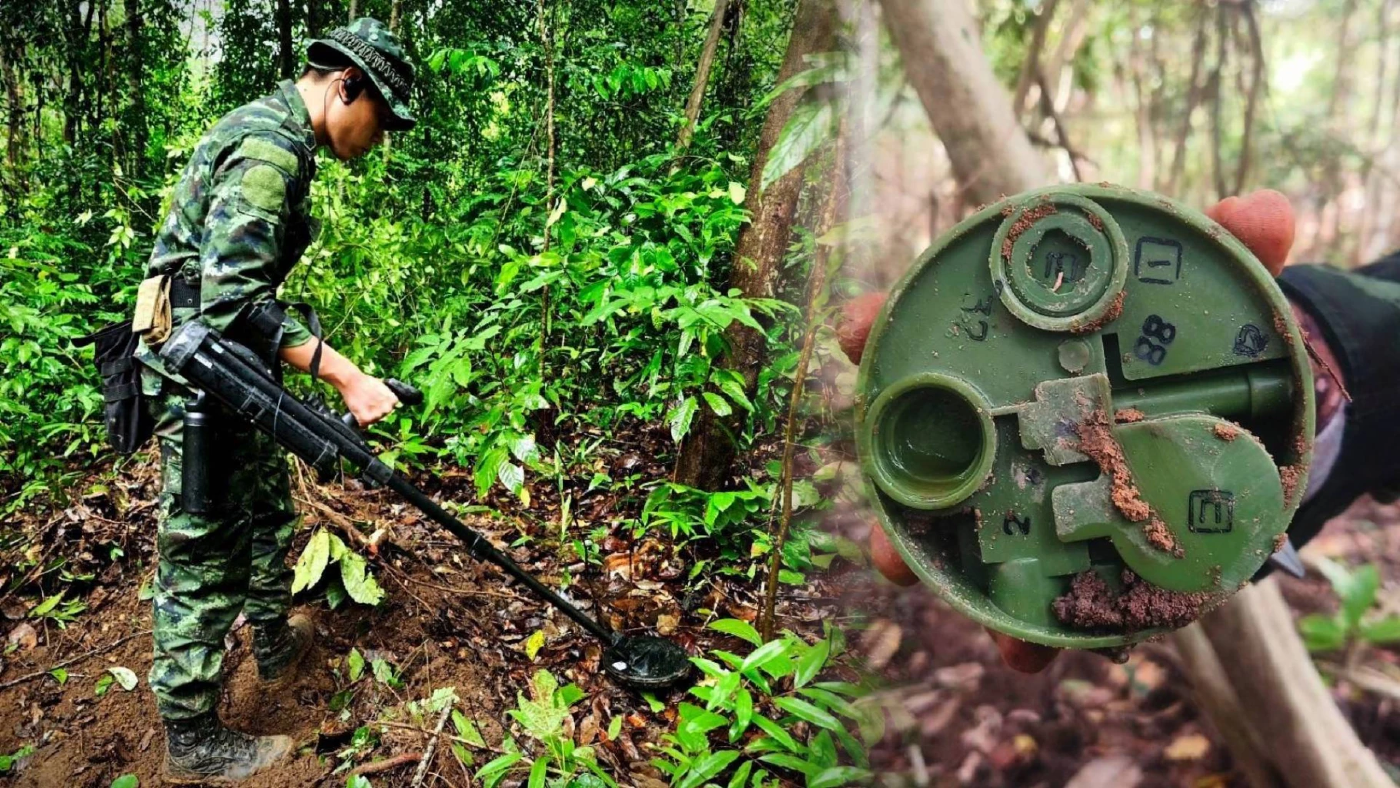
Thai Soldiers Suffer Injuries
Since mid-July 2025, several mine explosions have injured Thai soldiers. On 16 July, three members of Infantry Company 6021 were hurt in Ubon Ratchathani when a mine went off, costing one man his foot.
Another blast on 23 July near the Chong An Ma crossing wounded five more, again resulting in amputation. A further explosion in Surin on 11 August left another soldier without a foot, with two colleagues also wounded.
Lt. Gen. Boonsin Padklang, who commands the 2nd Army Region, insisted the mines were newly placed. He pointed out that some were just 30 centimetres from earlier blast sites and showed no signs of old age. He dismissed any hints that Thailand had planted them itself.
The RTA estimates that over a hundred PMN-2 and TM-57 mines remain hidden in the area, sparking urgent clearance work by the Thailand Mine Action Centre (TMAC). These efforts carry serious risk, as engineers must work in contested zones where further attacks are possible.
Thailand has accused Cambodia of breaking the Ottawa Convention. This 1997 agreement, which both countries have signed, outlaws the use, storage, production, and sharing of anti-personnel mines. Thailand says it destroyed its stockpiles in 2003, while Cambodia is believed to have held on to them as recently as 2024.
Nikorndej Balankura, Foreign Affairs Ministry spokesperson, described the use of mines as a direct attack on Thailand’s sovereignty and a clear violation of international rules during a press briefing on 20 July.
The RTA has also accused Cambodia of misusing global funding meant for mine removal. Winthai called on donors like Japan and Norway to review how their contributions are being spent.
Cambodia often presents itself as a leader in landmine clearance, with Prime Minister Hun Manet and the previous leader Hun Sen hosting events such as the 2024 Siem Reap–Angkor Summit. Thai officials counter this by pointing to Cambodia’s lack of cooperation on joint clearance teams, calling its public image misleading.
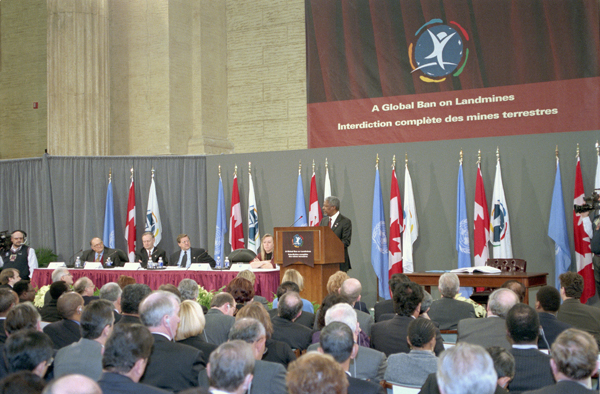
Thailand Appeals to the Ottawa Convention
In light of the ongoing incidents, Thailand has formally taken its grievances to the UN. On 15 August, Bangkok sent a letter accusing Cambodia of acts of aggression from 16 to 24 July, arguing these actions break Article 2(4) of the UN Charter, which forbids attacks on another country’s territory. Thai authorities have justified their military responses as self-defence under Article 51, stressing that their actions have stayed within reasonable limits.
The Thai government has also filed complaints with the head of the Ottawa Convention, now Japan, demanding that Cambodia be held responsible for any breaches. Acting Prime Minister Phumtham Wechayachai confirmed on 13 August that Bangkok would keep the pressure on the UN. He warned that more evidence could prompt Thailand to withdraw its chargé d’affaires from Cambodia.
On 15 August, Thailand briefed diplomats from over fifty countries on the Ottawa Convention, sharing evidence of what they described as Cambodian mine use and highlighting Cambodia’s unwillingness to run joint clearance projects. Winthai stated firmly that Thailand would not allow the facts to be distorted and pushed the international community to speak out.
Thailand’s officials have accused Cambodia’s former Prime Minister Hun Sen of pushing strategies they see as intended to provoke Thailand but still leave room for denial. Social media posts, including a short-lived video showing a Cambodian soldier preparing a TM-57 mine, have added to these claims.
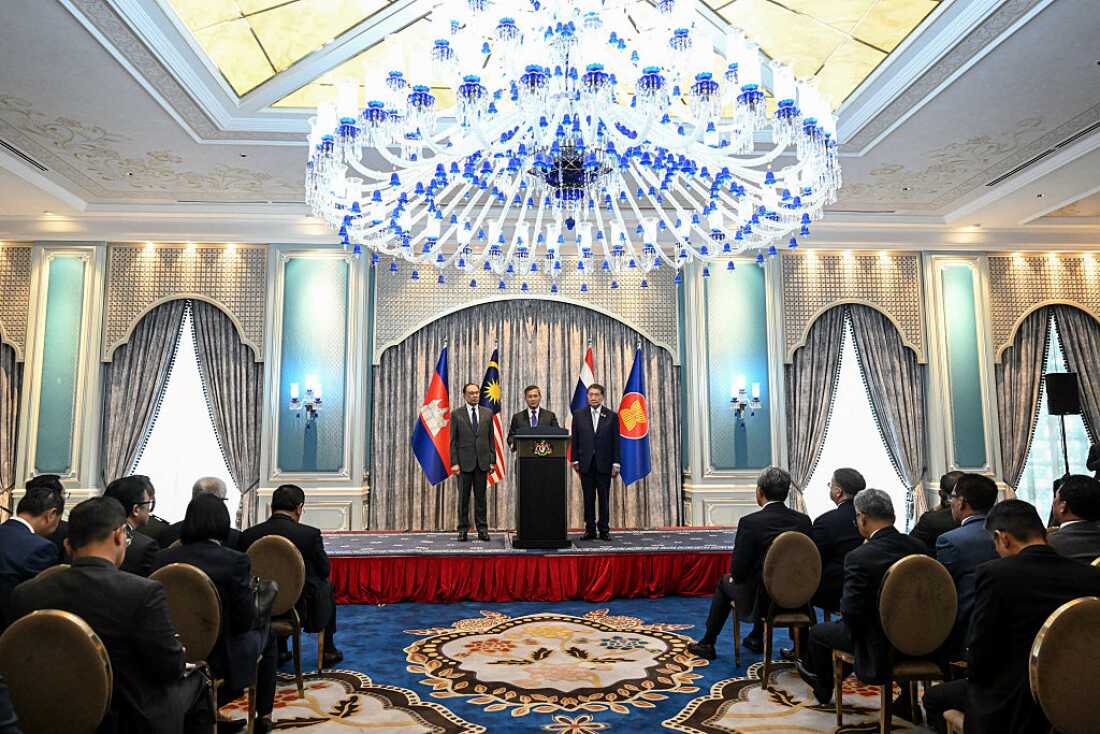
An Unsettled Truce
Some observers believe Hun Sen benefits from stirring up nationalist feelings during tense times, which draws attention away from Cambodia’s domestic issues. A Thai analyst, who did not want to be named, described this as reflective of Hun Sen’s usual political tactics.
Cambodia’s government says it sticks to the Ottawa Treaty and blames mine casualties on old mines from its civil war. They also claim that Thai troops crossed into these hazardous areas.
After a ceasefire agreement on 28 July and a 13-point plan agreed at the General Border Committee (GBC) meeting on 7 August, deep suspicion remains. The RTA has detained 18 Cambodian troops and says they will not be released until Cambodia observes the ceasefire and puts an end to mine laying. A fresh round of talks is set for 8–10 September in Siem Reap, though Thai officials are unsure whether Cambodia is genuinely interested in calming the situation.
Army Chief General Pana Klaewplodtook says the aim is to protect Thai sovereignty, not create further conflict. Even so, both sides show strong nationalist feelings, and Thai troops insist they will defend themselves if needed, leaving the border situation tense.
Thailand is continuing clearance operations and gathering evidence, as the world looks on. The decisions made on Thailand’s UN request and at the next round of diplomatic meetings could decide whether the situation improves or if the dispute worsens along the border.




